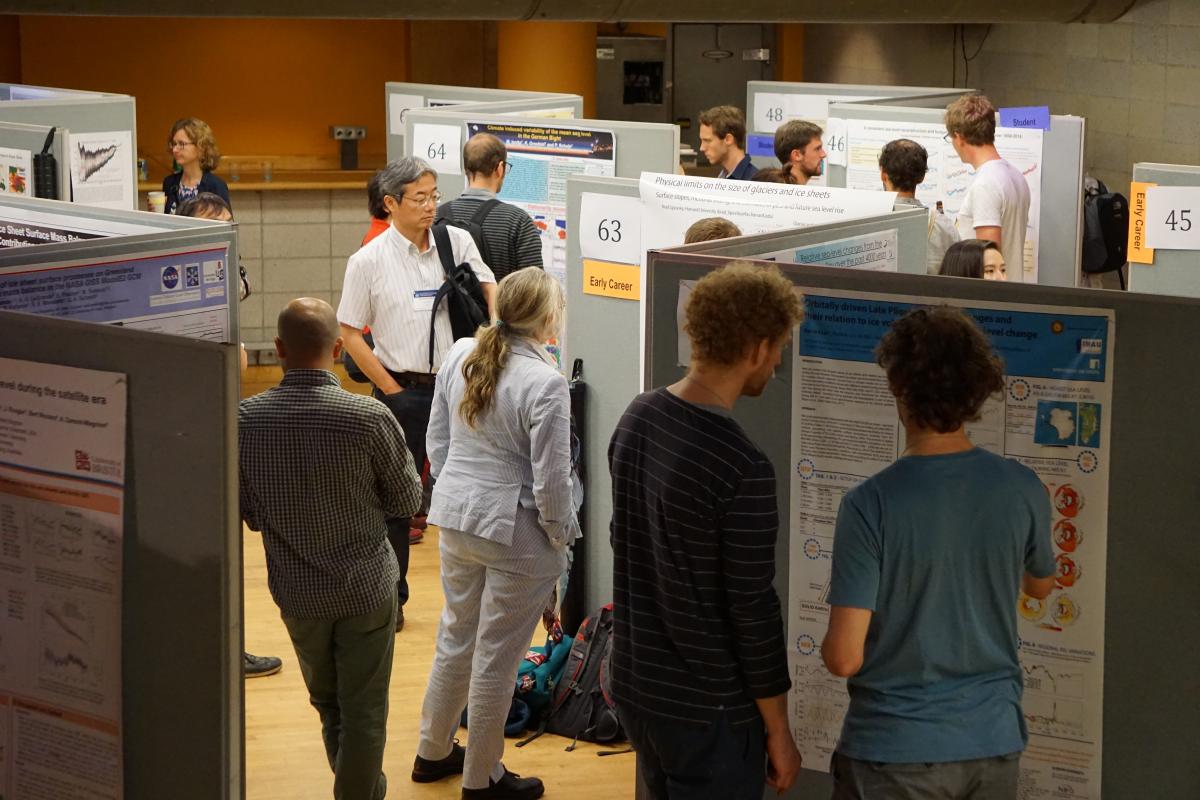Sea level conference day 4 highlights
The dynamics of sea level rise today and into the future
Day 4 Highlights
 The conference rolled into the fourth day wrapping up the contemporary sea level presentations and beginning to address future projections. The two plenary sessions had corresponding posters for each topic. Participants also heard about the evolving requirements of integrated sea level observations for regional and local decision making during the town hall.
The conference rolled into the fourth day wrapping up the contemporary sea level presentations and beginning to address future projections. The two plenary sessions had corresponding posters for each topic. Participants also heard about the evolving requirements of integrated sea level observations for regional and local decision making during the town hall.
Katy Hill, scientific officer for the Global Climate Observing System and Global Ocean Observing System, framed the town hall by wanting to know how we get the global ocean system humming to meet our decision making needs, particularly the requirements for moving into the coastal regions. The resolution depends on the application for the temporal and spatial sea level data needs of decision makers, said Melisa Menendez, University of Cantabria. We require observations from global and regional scales but need to reach down to the scale of a city, according to Gary Mitchum, University of South Florida, who works with local officials to provide scientific guidance on coastal projects that will be influenced by rising waters. We also need to resolve flooding events that last for less than a day. NOAA is developing products that try to show people that sea level rise is happening now, as compared to a far-off threat. A few opportune areas for improvement include enhancing ocean observations in the coastal region, engaging better with hydrologists and other disciplines, co-locating observations (e.g., at tide gauge stations), and improving understanding of the continental slope region.
Highlights from Thursday:
- Current observing systems (e.g., GRACE, Argo) allow the global sea level budget to be closed for the top 2000 m of the ocean. But there are residuals regionally, and systematic errors may mask global trends. (Felix Landerer, NASA JPL)
- Small-scale regional wind-driven oceanic processes are involved in causing sub-ice shelf warming around Antarctica, with global consequences for sea level. (Steve Griffies, NOAA Geophysical Fluid Dynamics Laboratory)
- Ocean initial-condition uncertainty can generate more uncertainty in sea level projections than atmospheric initial-condition uncertainty. (Aixue Hu, National Center for Atmospheric Research)
- Regional sea level projections differ significantly from global mean sea level projections. Regional sea level change is highly spatially variable, more temporally variable than the global mean, and different processes dominantly contribute to the sea level change in different regions. Regional consideration of sea level projections is important. (Aimee Slangen, Royal Netherlands Institute for Sea Research, Robert Kopp, Rutgers University, and Matt Palmer, Met Office Hadley Centre)
- There is a demand for probabilistic estimates of sea level rise – these provide a lot more information than just a likely range. Moreover, a probabilistic framework includes information on tail-end projections that are outside the likely range but still possible and important for policy makers. (Robert Kopp, Rutgers University, and Aimee Slangen, Royal Netherlands Institute for Sea Research)
- Improvements have been made for projections of the contribution of ice sheets to sea level change through ice sheet model development and model intercomparison efforts. The Ice Sheet Model Intercomparison Project for CMIP6 (ISMIP6) will involve improved climate forcing and climate-ice sheet coupling. (Sophie Nowicki, NASA Goddard Space Flight Center)
- Increasing the resolution of the dynamic component of global ocean models provides improved sea level projections, especially in coastal regions. (Xuebin Zhang, CSIRO)
- We are now making CMIP5-based sea level projections beyond 2100. Full climate model simulations are often too computationally expensive to general multi-century climate projections. But much can be done using large ensemble runs with simplified climate models to look at a wide range of scenarios and project each of the contributions to regional sea level changes independently. The modular nature means that individual elements can be refined over time. (Matt Palmer, Met Office Hadley Centre)
###
